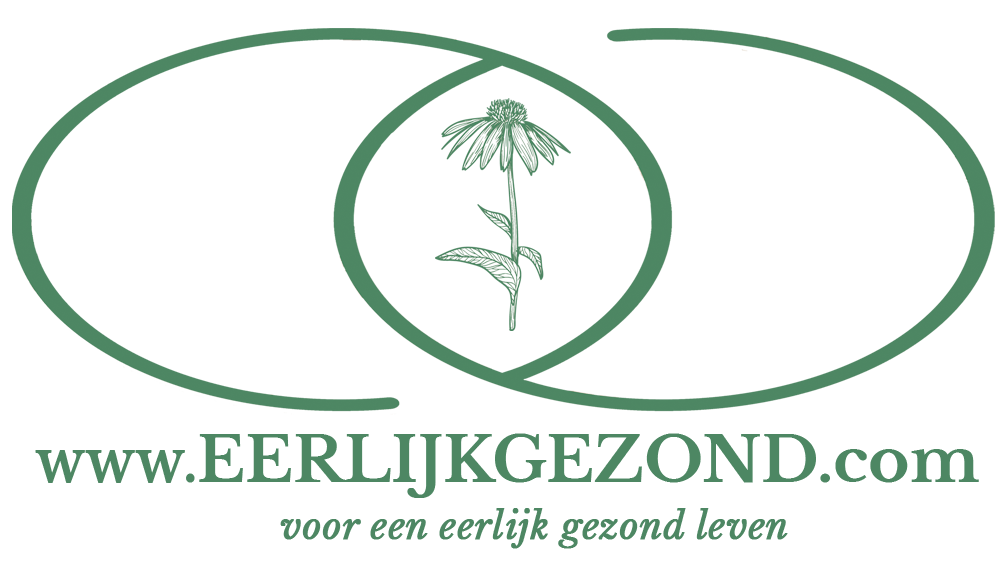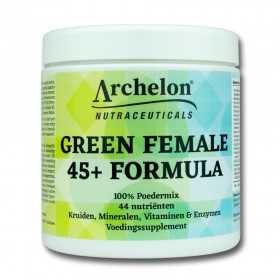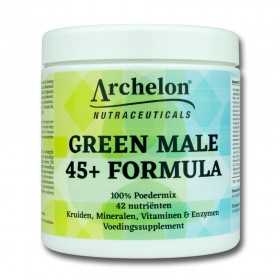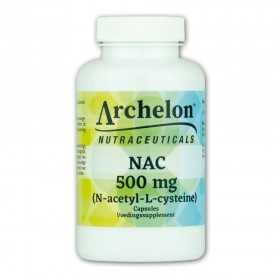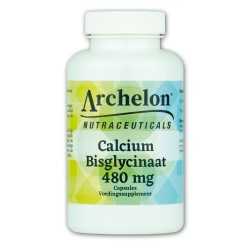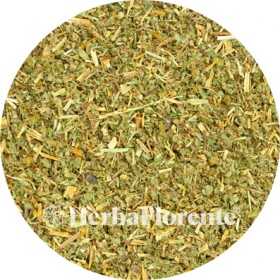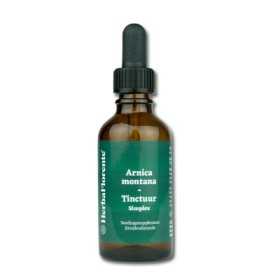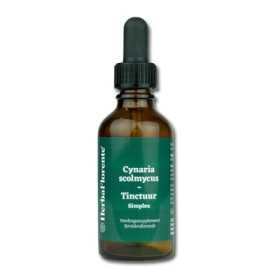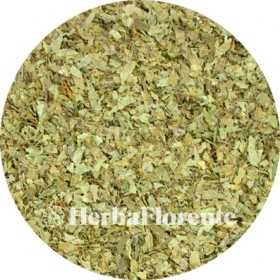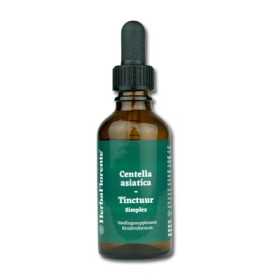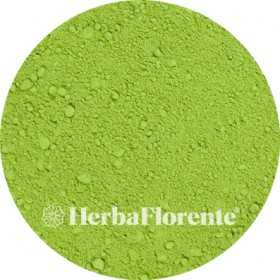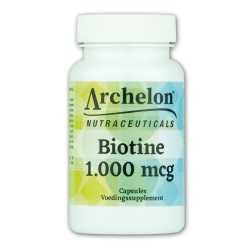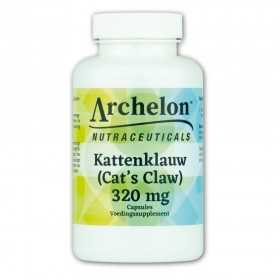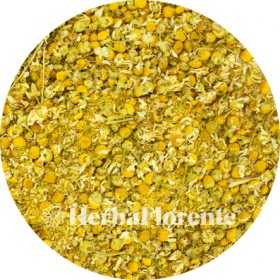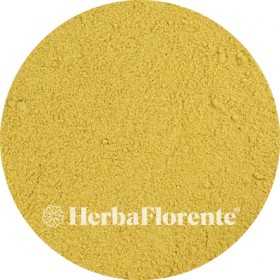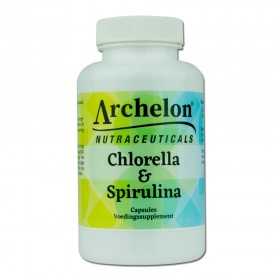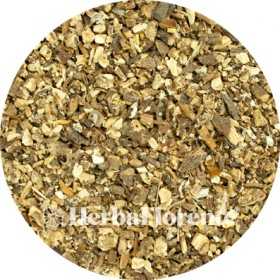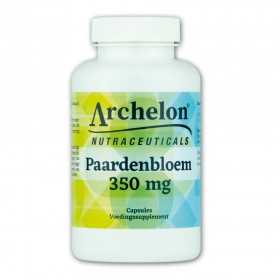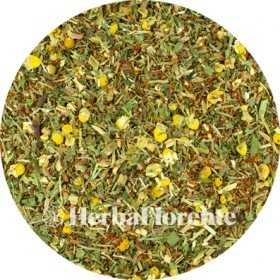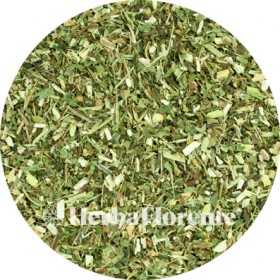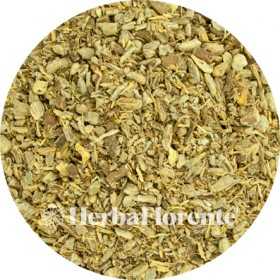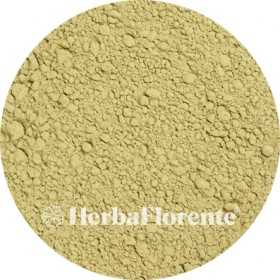Skin
There are 83 products.
A-C-D3 & Zinc
Vitamin A plays a crucial role in various biochemical and physiological processes in cells. It binds to retinoid receptors, which activate or deactivate genes involved in cell specialization.
Ascorbic acid is the pure form of vitamin C. People generally tolerate buffered forms of ascorbic acid better due to the lack of gastrointestinal complaints. Vitamin C is essential for the body.
Although our skin can produce vitamin D, this is often insufficient. Vitamin D supplementation is therefore often necessary, because this vitamin plays a role in various body processes.
Zinc is available in various forms, with zinc bisglycinate having excellent bioavailability.
Ascorbic acid is the pure form of vitamin C. People generally tolerate buffered forms of ascorbic acid better due to the lack of gastrointestinal complaints. Vitamin C is essential for the body.
Although our skin can produce vitamin D, this is often insufficient. Vitamin D supplementation is therefore often necessary, because this vitamin plays a role in various body processes.
Zinc is available in various forms, with zinc bisglycinate having excellent bioavailability.
€35.95
Agremonie (Common) (Church Steeples) - Agrimonia eupatoria
The common agrimony (Agrimonia eupatoria) is a herbaceous plant belonging to the rose family (Rosaceae). This plant, with its bright yellow flowers in long, slender spikes, is quite common on calcareous roadsides and dikes in Belgium and the Netherlands.
In herbal medicine, this plant is used for various purposes due to its active constituents, including triterpenes, tanning and bitter substances, flavonoids, silicic acid and mucilages.
The most common use is as a tea, but the herb can also be made into a tincture.
In herbal medicine, this plant is used for various purposes due to its active constituents, including triterpenes, tanning and bitter substances, flavonoids, silicic acid and mucilages.
The most common use is as a tea, but the herb can also be made into a tincture.
€2.00
From: €2.00
Alfalfa - Medicago sativa
Lucerne (Medicago sativa), also known as alfalfa, is a perennial plant that can live between five and twelve years, depending on the variety and climate. With a height of up to one meter and clusters of small purple flowers, the plant resembles clover. The plant has a deep and powerful root system that can extend up to 4.5 meters.
Lucerne is native to Europe and is grown worldwide as animal feed. In the Netherlands, alfalfa is mainly dried artificially for the production of protein-rich animal feed.
Lucerne is native to Europe and is grown worldwide as animal feed. In the Netherlands, alfalfa is mainly dried artificially for the production of protein-rich animal feed.
€2.00
From: €2.00
Arnica Tincture - Arnica montana Tincture
Single herbal tincture made with dried flower of Arnica montana (Arnica).
Arnica, also known as wolverlei (Arnica montana), is a perennial plant belonging to the composite family (Asteraceae). This plant naturally occurs in the Alps, Pyrenees, the Balkans and southern Scandinavia. You can also find it in the east of the Netherlands and in the Belgian Ardennes.
The plant grows to a height of 20-45 cm with a sparsely branched stem. Its leaves are opposite each other and are 2-4 cm wide. The lower leaves have an elliptical to obovate-lanceolate shape, while the upper pair of leaves are linear-lanceolate.
Arnica, also known as wolverlei (Arnica montana), is a perennial plant belonging to the composite family (Asteraceae). This plant naturally occurs in the Alps, Pyrenees, the Balkans and southern Scandinavia. You can also find it in the east of the Netherlands and in the Belgian Ardennes.
The plant grows to a height of 20-45 cm with a sparsely branched stem. Its leaves are opposite each other and are 2-4 cm wide. The lower leaves have an elliptical to obovate-lanceolate shape, while the upper pair of leaves are linear-lanceolate.
€27.86
€30.95
Artichoke - Cynaria scolmycus - Cut
The artichoke (Cynara scolymus) is a plant that originates from the Mediterranean region. People eat the closed green or purple flower buds as vegetables. The artichoke leaf has a slightly bitter taste. This plant has been consumed for centuries for the support it provides to digestion and the cleansing effect of the liver, thanks to its high concentration of antioxidants.
The artichoke is rich in various nutrients and phytonutrients. It contains beta-carotene, vitamin C, vitamin B, and minerals such as calcium, magnesium and potassium. It also contains flavonoids, enzymes and tannins.
The artichoke is rich in various nutrients and phytonutrients. It contains beta-carotene, vitamin C, vitamin B, and minerals such as calcium, magnesium and potassium. It also contains flavonoids, enzymes and tannins.
€2.00
From: €2.00
Artichoke Tincture - Cynaria scolmycus Tincture
Single herbal tincture made with dried leaf of Cynaria scolmycus (Artichoke).
The artichoke (Cynara scolymus) is a plant that originates from the Mediterranean region. People eat the closed green or purple flower buds as vegetables. The artichoke leaf has a slightly bitter taste. This plant has been consumed for centuries for the support it provides to digestion and the cleansing effect of the liver, thanks to its high concentration of antioxidants.
The artichoke is rich in various nutrients and phytonutrients. It contains beta-carotene, vitamin C, vitamin B, and minerals such as calcium, magnesium and potassium. It also contains flavonoids, enzymes and tannins.
The artichoke (Cynara scolymus) is a plant that originates from the Mediterranean region. People eat the closed green or purple flower buds as vegetables. The artichoke leaf has a slightly bitter taste. This plant has been consumed for centuries for the support it provides to digestion and the cleansing effect of the liver, thanks to its high concentration of antioxidants.
The artichoke is rich in various nutrients and phytonutrients. It contains beta-carotene, vitamin C, vitamin B, and minerals such as calcium, magnesium and potassium. It also contains flavonoids, enzymes and tannins.
€9.95
Asian Pennywort (Gotu kola) - Hydrocotyles Folium (Centella asiatica)
Asian pennywort also known as Gotu kola(Centella asiatica), is a plant that thrives in Southeast Asia and plays a central role in Ayurvedic medicine. Due to its diverse active substances, Asian pennywort is widely used in herbal medicine. It is known for supporting cognitive functions such as memory, concentration and learning, and it is also used to promote healthy blood circulation and vascular function.
Asian pennywort is a delicate plant with creeping stems and small, rounded leaves, often accompanied by white or pink flowers. The main bioactive compounds in Asian pennywort are triterpene glycosides, alkaloids and essential oils.
Asian pennywort is a delicate plant with creeping stems and small, rounded leaves, often accompanied by white or pink flowers. The main bioactive compounds in Asian pennywort are triterpene glycosides, alkaloids and essential oils.
€3.50
From: €3.50
Asiatic Pennywort Tincture - Centella asiatica (Hydrocotyles) Tincture
Single herbal tincture made with dried herb of Centella asiatica (Hydrocotyles) (Asiatic Pennywort) (Gotu kola).
Asian pennywort also known as Gotu kola(Centella asiatica), is a plant that thrives in Southeast Asia and plays a central role in Ayurvedic medicine. Due to its diverse active substances, Asian pennywort is widely used in herbal medicine. It is known for supporting cognitive functions such as memory, concentration and learning, and it is also used to promote healthy blood circulation and vascular function.
Asian pennywort also known as Gotu kola(Centella asiatica), is a plant that thrives in Southeast Asia and plays a central role in Ayurvedic medicine. Due to its diverse active substances, Asian pennywort is widely used in herbal medicine. It is known for supporting cognitive functions such as memory, concentration and learning, and it is also used to promote healthy blood circulation and vascular function.
€9.95
Barley grass - Hordeum vulgare
Barley grass (Hordeum vulgare) is obtained by allowing barley to fully germinate and then cutting off the green shoots when they reach a height of 20 to 30 cm. This grass is known for its high nutrient density. It is packed with bioflavonoids, beta-carotene and a wide range of vitamins, including A, B1, B2, B3, B6, B12, C, E and K. In addition, barley grass contains minerals such as calcium, phosphorus, potassium, iron and zinc. Barley grass powder is also a rich source of chlorophyll and contains all essential amino acids.
€2.60
From: €2.60
Berk - Betula pendula Roth, Betulae (Leaf Grounded)
Birch (Betula) has been valued for centuries for its beneficial properties, thanks to the presence of bioactive substances. In the past it was even considered a sacred tree. In the spring, just before the tree sprouts, birch sap is tapped because that is when the sap flow is strongest. This juice is full of phytonutrients, minerals and vitamins. The young leaves are then collected, because they also contain a high content of various beneficial substances during this period.Birch leaf is rich in flavonoids, saponins and tannins. The saponins and tannins are responsible for the diuretic properties of the birch.
€2.10
From: €2.10
Biotin - 1,000 mcg
Biotin (vitamin B8) is a coenzyme for so-called carboxylase enzymes that play a role in, among other things, the metabolism of carbohydrates, fats and proteins. In this way it helps to release energy from food. Biotin is also important for normal psychological function, supporting brain and nerve functions involved in memory, concentration and mood. Biotin is also important for healthy mucous membranes, healthy skin and healthy hair.
€14.95
Bitterhout - Quassiae
Quassia, known in Surinamese as kwasibita, is the heartwood of the Quassia amara, a plant species from the Quassia genus within the Tree of Heaven family. This South American plant is often planted in the tropics for its use as a remedy for malaria.
Quassia amara is a small, evergreen shrub found in tropical South America, particularly the Guianas, northern Brazil and Venezuela. The plant grows in the understory of the rainforest and its striking red flowers are pollinated by hummingbirds. Because of these beautiful flowers, the plant is also often planted for decorative purposes.
Quassia amara is a small, evergreen shrub found in tropical South America, particularly the Guianas, northern Brazil and Venezuela. The plant grows in the understory of the rainforest and its striking red flowers are pollinated by hummingbirds. Because of these beautiful flowers, the plant is also often planted for decorative purposes.
€2.80
From: €2.80
Bladderwrack Fine - Fucus vesiculosus
Bladderwrack (Fucus vesiculosus) is a type of brown algae belonging to the genus Fucus. It thrives along the northern coasts of the Atlantic and Pacific Oceans, and in the North Sea and Baltic Sea, often found in kelp forests. This seaweed is characterized by air bladders that serve as a floating organ, although there are also variants without these bladders.
Like other brown algae, bladderwrack is rich in a specific class of polyphenols called phlorotannins, which possess powerful antioxidant properties. In addition, these phlorotannins have antibiotic, antifungal and anti-inflammatory properties.
Like other brown algae, bladderwrack is rich in a specific class of polyphenols called phlorotannins, which possess powerful antioxidant properties. In addition, these phlorotannins have antibiotic, antifungal and anti-inflammatory properties.
€2.50
From: €2.50
Cat’s Claw - 320 mg
Cat's claw (Uncaria tomentosa) is a climbing plant that is native to the Amazon region of Brazil and Peru. It is highly valued in the Peruvian Amazon and is among the protected species. This plant is often called the 'sacred herb of the rainforest' because of its significance. The name 'cat's claw' or 'cat's claw' is derived from the small claw-like thorns at the base of the leaves, which resemble a cat's claws. These claws help the vine to wrap itself around trees and climb up to a hundred meters high!
€19.95
Chamomile (Flower) - Matricaria recutita, Chamomillae europ. - Whole
True chamomile, also known as Matricaria chamomilla or Matricaria recutita, is native throughout Europe and widely cultivated in countries such as Hungary and Eastern Europe. The ancient Egyptians revered chamomile as the flower of the sun god Ra. The herb is known for its supportive effect on the immune system, soothing effect on the respiratory tract and promoting digestion. Additionally, chamomile is often used as a natural sedative and to promote restful sleep.
€2.95
From: €2.95
Chamomile - Matricaria recutita, Chamomillae europ.
True chamomile, also known as Matricaria chamomilla or Matricaria recutita, is native throughout Europe and widely cultivated in countries such as Hungary and Eastern Europe. The ancient Egyptians revered chamomile as the flower of the sun god Ra. The herb is known for its supportive effect on the immune system, soothing effect on the respiratory tract and promoting digestion. Additionally, chamomile is often used as a natural sedative and to promote restful sleep.
€3.00
From: €3.00
Chlorella 200 mg & Spirulina 200 mg
Discover the power of the combination of chlorella and spirulina. They are packed with essential nutrients such as proteins, vitamins and minerals, and are known for their detoxifying properties and supporting overall health. Together, these super algae form a powerful synergistic blend that supports vitality, the immune system, the body and mind for optimal health and well-being. Feel the power of the natural resources in every capsule.
€19.95
Comfrey Tincture - Symphytum officinalis Tincture
Single herbal tincture made with dried root of Symphytum officinalis (Comfrey).
The common comfrey (Symphytum officinale) is common in the Netherlands and Belgium. Comfrey belongs to the rough-leaved family (Boraginaceae). It is a genus of plants consisting mainly of perennial herbs, not shrubs or trees. The calyx of the flower is cut by a quarter or completely, while the leaves are elongated to lanceolate and scattered.
Comfrey is traditionally used for ointments, wraps and compresses that help with broken bones, sprains and bruises.
The common comfrey (Symphytum officinale) is common in the Netherlands and Belgium. Comfrey belongs to the rough-leaved family (Boraginaceae). It is a genus of plants consisting mainly of perennial herbs, not shrubs or trees. The calyx of the flower is cut by a quarter or completely, while the leaves are elongated to lanceolate and scattered.
Comfrey is traditionally used for ointments, wraps and compresses that help with broken bones, sprains and bruises.
€12.95
Dandelion (Root) - Taraxum officinale
Dandelion (Taraxacum officinale) has been known for centuries for its ability to support liver and gallbladder function. Both the root and the above-ground parts of the plant are rich in nutrients. In addition, dandelion has a beneficial effect on digestion.
The rich nutritional value of dandelions makes it advisable to regularly pick some fresh leaves in the wild and add them to salads. They are especially tasty in the spring. The fresh yellow flowers can be used as a cheerful decoration in salads and dried they can be processed into a 'wild' herbal tea.
Dandelions contain a high level of bitter substances, which always indicates that they are beneficial for liver and gallbladder function.
The rich nutritional value of dandelions makes it advisable to regularly pick some fresh leaves in the wild and add them to salads. They are especially tasty in the spring. The fresh yellow flowers can be used as a cheerful decoration in salads and dried they can be processed into a 'wild' herbal tea.
Dandelions contain a high level of bitter substances, which always indicates that they are beneficial for liver and gallbladder function.
€2.50
From: €2.50
Dandelion - 350 mg
Dandelion (Taraxacum officinale) has been known for centuries for its ability to support liver and gallbladder function. Both the root and the above-ground parts of the plant are rich in nutrients. In addition, dandelion has a beneficial effect on digestion.
The rich nutritional value of dandelions makes it advisable to regularly pick some fresh leaves in the wild and add them to salads. They are especially tasty in the spring. The fresh yellow flowers can be used as a cheerful decoration in salads and dried they can be processed into a 'wild' herbal tea.
Dandelions contain a high level of bitter substances, which always indicates that they are beneficial for liver and gallbladder function.
The rich nutritional value of dandelions makes it advisable to regularly pick some fresh leaves in the wild and add them to salads. They are especially tasty in the spring. The fresh yellow flowers can be used as a cheerful decoration in salads and dried they can be processed into a 'wild' herbal tea.
Dandelions contain a high level of bitter substances, which always indicates that they are beneficial for liver and gallbladder function.
€19.95
Early Morning Herbal Tea
Herbal tea composed of various herbs
Nice for early morning
Nice for early morning
€3.95
Echinacea (Coneflower) (Herb) - Echinaceae purp.
Purple coneflower (Echinacea purpurea) is one of the most widely grown and used herbs in the world because of its positive influence on the immune system. The genus name 'echinacea' is derived from the Greek word 'echinos', meaning 'hedgehog', because of the spiky flower cone. Since the beginning of the last century, much research has been done into Echinacea purpurea in Europe.
This plant has a rich history and originally comes from North America. Indigenous tribes used this perennial plant for its beneficial effects on the immune system. Colonist doctor H.C.F. Meyer adopted this knowledge from the indigenous population and brought the first product based on echinacea onto the market in 1871.
This plant has a rich history and originally comes from North America. Indigenous tribes used this perennial plant for its beneficial effects on the immune system. Colonist doctor H.C.F. Meyer adopted this knowledge from the indigenous population and brought the first product based on echinacea onto the market in 1871.
€2.00
From: €2.00
Echinacea (Coneflower) (Root) - Echinaceae purp.
Purple coneflower (Echinacea purpurea) is one of the most widely grown and used herbs in the world because of its positive influence on the immune system. The genus name 'echinacea' is derived from the Greek word 'echinos', meaning 'hedgehog', because of the spiky flower cone. Since the beginning of the last century, much research has been done into Echinacea purpurea in Europe.
This plant has a rich history and originally comes from North America. Indigenous tribes used this perennial plant for its beneficial effects on the immune system. Colonist doctor H.C.F. Meyer adopted this knowledge from the indigenous population and brought the first product based on echinacea onto the market in 1871.
This plant has a rich history and originally comes from North America. Indigenous tribes used this perennial plant for its beneficial effects on the immune system. Colonist doctor H.C.F. Meyer adopted this knowledge from the indigenous population and brought the first product based on echinacea onto the market in 1871.
€3.00
From: €3.00
Echinacea (Coneflower) - Echinaceae purp.
Purple coneflower (Echinacea purpurea) is one of the most widely grown and used herbs in the world because of its positive influence on the immune system. The genus name 'echinacea' is derived from the Greek word 'echinos', meaning 'hedgehog', because of the spiky flower cone. Since the beginning of the last century, much research has been done into Echinacea purpurea in Europe.
This plant has a rich history and originally comes from North America. Indigenous tribes used this perennial plant for its beneficial effects on the immune system. Colonist doctor H.C.F. Meyer adopted this knowledge from the indigenous population and brought the first product based on echinacea onto the market in 1871.
This plant has a rich history and originally comes from North America. Indigenous tribes used this perennial plant for its beneficial effects on the immune system. Colonist doctor H.C.F. Meyer adopted this knowledge from the indigenous population and brought the first product based on echinacea onto the market in 1871.
€4.00
From: €4.00
